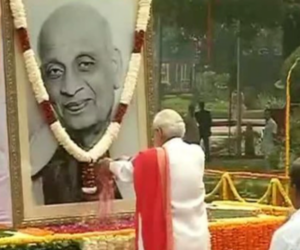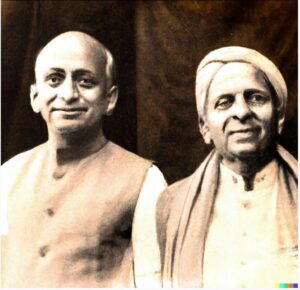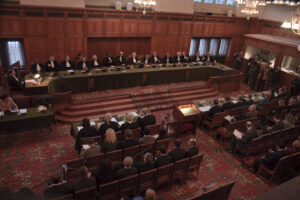
In today’s digital age, social media has become an integral part of our daily lives. With the click of a button, we have access to a vast amount of information and news from around the world. However, with this abundance of information also comes the spread of misinformation and disinformation.
The recent image of Rahul Gandhi sitting behind a painting of a Mughal emperor is a classic example of how misinformation can spread rapidly on social media. The image, which has been shared extensively on various social media platforms, is intended to create communal tensions and undermine the credibility of democratic institutions.
The image manipulation has been debunked by fact-checking website BOOM Live, which showed that the original image featured a painting of Mahatma Gandhi and not a Mughal emperor. The fact-checking website has also highlighted the dangers of fake news and misinformation, which can create unnecessary tension and division among communities.
This incident highlights the importance of fact-checking and responsible use of social media. In today’s world, where misinformation is rampant, it is essential to verify the authenticity of any image or claim before sharing it on social media. As responsible citizens, it is our responsibility to ensure that we do not spread fake news or disinformation and that we promote a more informed and rational public discourse.
Moreover, such incidents also highlight the importance of media literacy and education. It is essential to educate people about the dangers of fake news and how to distinguish between accurate and inaccurate information. In this regard, schools and colleges can play a significant role in promoting media literacy and critical thinking skills.
The use of social media has become an integral part of political communication and election campaigns. However, political parties must exercise caution while using social media platforms to communicate with the public. They must ensure that the information they disseminate is accurate and based on facts.
In conclusion, the recent incident involving the image of Rahul Gandhi and the painting of a Mughal emperor highlights the dangers of misinformation and disinformation on social media platforms. It is crucial to promote media literacy, critical thinking skills, and responsible use of social media to combat fake news and disinformation. As responsible citizens, it is our responsibility to ensure that we do not spread fake news or disinformation and that we promote a more informed and rational public discourse.




